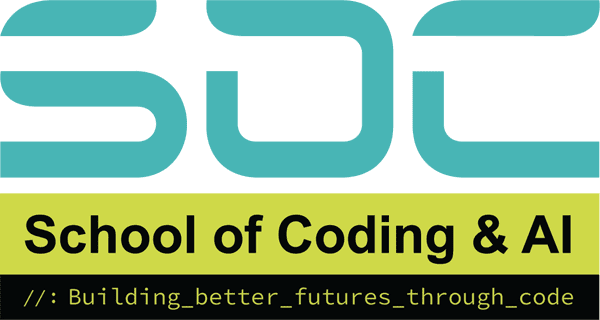Introduction
In the fast-paced world of software development, having the correct tools might mean the difference. Whether you’re a seasoned developer or just getting started, using the best useful tools for developers can boost productivity, streamline your workflow, and improve code quality. However, with so many alternatives accessible, how can you decide which ones are essential? In this article, we’ll look at the ten most useful tools for developers that can help you write cleaner code, collaborate better, and, ultimately, become more productive. Let’s get started.
1. Visual Studio Code (VS Code)
At the top of the list is Visual Studio Code (VS Code), a lightweight yet capable code editor that supports a variety of programming languages. VS Code is extensively customisable, with numerous extensions covering everything from syntax highlighting to debugging and version control.
Why is it useful? Its simplicity, speed, and extensive extension marketplace make it one of the most useful tools for developers.
Key features: Built-in Git support, IntelliSense, customisable themes, and a powerful debugger.
Fact: According to Stack Overflow’s Developer Survey, VS Code is the most popular code editor, with more than 70% of developers using it frequently.
Pro Tip: Use the VS Code extension marketplace to locate solutions that meet your individual development needs, such as Prettier for code formatting.
2. GitHub
Version control is an essential component of any developer’s workflow, and GitHub is the preferred platform for maintaining code repositories, interacting with other developers, and contributing to open-source projects.
Why is it useful? GitHub makes version control and collaboration easier, allowing developers to track changes, manage disagreements, and integrate code easily.
Key features: Git integration, pull requests, code reviews, and continuous integration with GitHub Actions.
GitHub is the world’s largest host of open-source projects, with over 56 million developers regularly using it.
Pro Tip: Use GitHub’s collaborative tools, such as project boards and issue tracking, to manage your development projects effectively.
3. Docker
Docker is an indispensable tool for developers who wish to build, deploy, and manage programs in separate containers. It is frequently used to improve development workflows by ensuring a consistent environment throughout the product lifecycle.
Why is it useful? It solves the “works on my machine” problem by ensuring that applications run consistently in multiple contexts.
Key features: Containerisation, seamless connection with CI/CD pipelines, and configuration sharing.
Fact: A recent survey found that 31% of engineers use Docker to automate deployment and environment management.
Pro Tip: Use Docker Compose to run multi-container applications and manage complex projects more easily.
4. Postman
Testing APIs is an important component of modern web development, and Postman is the ideal tool for the task. Postman makes it simple to design, test, and document APIs, ensuring that your backend services perform as expected.
Why it is useful: It makes API development easier by offering a simple interface for performing HTTP queries, analysing answers, and automating testing routines.
Key features: API testing, automation, collaboration tools, and extensive API documentation are some of the key features.
Pro Tip: Use Postman’s collections feature to save and share API requests for easier testing and collaboration among team members.
5. JIRA
When it comes to project management, Atlassian’s JIRA is the leading option among development teams. JIRA enables developers and project managers to track issues, assign tasks, and monitor progress in agile workflows.
Why is it useful? It integrates with Scrum and Kanban boards, allowing teams to plan sprints, monitor workloads, and track project timeframes.
Key features: Issue tracking, project roadmaps, sprint planning, and real-time reporting.
Fact: JIRA is trusted by over 65,000 businesses globally, making it one of the most popular project management solutions in the technology sector.
Pro tip: Integrate JIRA with Bitbucket and GitHub to improve your development cycle from coding to deployment.
Also Read – 10 Mind-Blowing AI Tools for Your Business You Won’t Believe Exist!
6. Slack
Effective communication is the foundation of successful development teams, and many developers now use Slack as their primary communication medium. Slack enables real-time communications, file sharing, and connection with dozens of development tools.
Why is it useful? It improves team cooperation and communication by organising talks into channels, which eliminates the need for lengthy email threads.
Key features: Customisable channels, file sharing, third-party software connections (e.g., GitHub, JIRA), and video calling.
Fact: Over 12 million individuals use Slack every day, including thousands of development teams from diverse industries.
Pro Tip: Use Slack’s integrations to receive real-time alerts from tools like GitHub, Jenkins, or Trello, allowing your team to stay updated without switching platforms.
7. Jenkins
Jenkins is an invaluable tool for developers working in Continuous Integration/Continuous Deployment (CI/CD) pipelines. Jenkins automates the process of testing and deploying code, ensuring that software updates are delivered promptly and consistently.
Why is it useful? It automates repetitive operations in the software delivery pipeline, decreasing errors and increasing the development pace.
Key features: Plugin support for many programming languages, automated testing, and deployment scheduling.
Facts: Jenkins is the most popular CI/CD tool, with more than 300,000 installations globally.
Pro tip: Use Jenkins and Docker to automate consistent development settings and ensure smooth production builds.
8. Figma
For developers who work closely with designers, Figma is an essential tool. Figma enables real-time collaboration on UI/UX designs, making it easier for developers to keep up with design teams and create visually attractive apps.
Why is it useful? It provides a cloud-based platform for developers and designers to interact, making designs more accessible and transparent.
Key features: Real-time collaboration, design prototyping, and developer handoff tools.
Statistics: Figma has over 4 million users for creative collaboration, making it one of the fastest-growing design tools available today.
Pro Tip: Figma’s developer handoff function allows for direct access to design parameters like as colours, typefaces, and dimensions, expediting the development process.
9. Sublime Text
While VS Code is the most popular coding tool, Sublime Text remains a favourite among developers who prefer a simple and fast text editor. It is lightweight, responsive, and supports a variety of programming languages, making it suitable for short modifications or projects with low overhead.
Why is it useful? Its lightning-fast quickness and customisable shortcuts improve coding efficiency for developers who require speed.
Key features: Multiple options, split editing, and a distraction-free mode.
Pro tip: Use Sublime Text’s package manager to install custom plugins and themes to improve your coding experience.
10. Chrome DevTools
Any developer working on web applications should be familiar with Chrome DevTools. This built-in tool allows you to analyse and debug code right in the browser, providing real-time feedback on how your application is working.
Why is it useful? It provides precise insights into webpage performance, network activity, and debugging capabilities, which are essential for web development.
Key features: JavaScript debugging, performance monitoring, network analysis, and CSS editing.
Fact: 87% of web developers use Chrome DevTools to diagnose and optimise their web projects.
Pro Tip: Use Chrome DevTools’ “Performance” tab to discover and resolve bottlenecks that slow down web pages, improving user experience and SEO rankings.
Conclusion
To enhance speed, cooperation, and code quality, developers require the appropriate tools. From coding environments like VS Code to collaboration platforms like GitHub, these ten useful tools for developers can significantly improve your workflow. Whether you’re working on a single project or leading a large team, these tools give the structure and automation you need to succeed.
The key to selecting the correct useful tools for developers is to examine your requirements, stay up to date on the latest capabilities, and continually optimize your process. Begin implementing these must-have tools into your toolkit immediately, and watch your productivity and code quality increase!
Frequently Asked Questions
For novices, Visual Studio Code, GitHub, and Postman will meet your fundamental coding, version control, and API testing requirements. These are some of the most useful tools for developers starting out. As you become more advanced, consider adding Docker and JIRA to your workflows.
Consider the specific needs of your project and team. Tools such as GitHub and Slack are extremely useful tools for developers when working on large, collaborative projects. If you’re working on individual code projects, Sublime Text or VS Code may be more appropriate.
Many of these apps have free versions or tiers, with premium capabilities offered to bigger teams or advanced users. For example, Visual Studio Code and Chrome DevTools are fully free, whereas GitHub and Slack have free tiers with potential paid upgrades.
The world of software development is changing at a rapid pace, and 2025 is no exception. This year, developers have access to an outstanding range of tools that enable code creation, testing, and deployment faster, safer, and more collaboratively than ever before.
- AI-Powered Code Assistants: Tools like GitHub Copilot X, Amazon CodeWhisperer, and the emerging wave of AI coding agents are transforming the way engineers write code. These tools may suggest entire blocks of logic, identify issues instantaneously, and even explain code in plain English, allowing engineers to focus on addressing genuine problems.
- Cloud-based Development Environments: Platforms such as Gitpod and Codespaces have matured enough to replace traditional local setups. Developers may use them to quickly create a ready-to-code environment from any workstation and interact with teammates in real time, all in the cloud.
- Low-code and No-code Integrations: Even experienced developers are now using low-code platforms such as OutSystems or Mendix to quickly prototype apps, automate processes, and integrate services, saving hours of tedious coding.
- Containerisation and Orchestration Tools: Docker remains popular in 2025, as does Kubernetes, which has become the industry standard for delivering, scaling, and managing containerised applications. New tools, such as K3s and lightweight Kubernetes distributions, make these powerful technologies more accessible.
5. Security Tools. Built into the Pipeline: Security is not negotiable in 2025. Snyk and GitLab’s built-in security scanners check code for vulnerabilities every time you commit, providing developers with peace of mind and assisting teams in meeting higher compliance standards.
Coding and debugging remain at the heart of a developer’s daily tasks. Fortunately, there has never been a more comprehensive or user-friendly toolbox available.
- Integrated Development Environments (IDEs): IDEs such as Visual Studio Code, JetBrains IntelliJ IDEA, and PyCharm remain popular. These environments provide smart code completion, syntax highlighting, version control integration, and built-in terminals, making coding more efficient and debugging easier.
- Debuggers: Debugging is necessary. Modern integrated development environments frequently include advanced debugging tools such as step-through debugging, breakpoints, variable watching, and call stack tracing. Browser DevTools (such as Chrome DevTools) are essential for web developers because they allow them to investigate HTML, CSS, and JavaScript in real time.
- Linters and Formatters: Tools such as ESLint, Prettier, and Flake8 assist keep code clean and legible by automatically reporting syntax problems, enforcing style rules, and formatting code correctly.
- Version Control: Git remains the foundation of modern programming. Tools like GitKraken, Sourcetree, and GitHub Desktop make handling branches, merges, and pull requests much easier, especially for people new to Git.
- Continuous Integration (CI) Pipelines: Jenkins, CircleCI, and GitHub Actions automate the process of creating, testing, and deploying code. This allows developers to identify bugs early on, before they reach production.
Many engineers now work remotely; therefore, it’s no wonder that remote team tools have become indispensable.
- Collaborative Coding: Tools such as Visual Studio Live Share enable several developers to code collaboratively in real time, editing, debugging, and reviewing as if they were side by side.
- Project Management: Jira, Trello, and Linear help remote teams stay organised. Tasks, sprints, and roadmaps are available to everyone, making work more transparent and manageable.
- Communication: Slack, Microsoft Teams, and Discord remain popular options for instant messaging, video conversations, and short stand-ups. Integration with code repositories and continuous integration pipelines keeps everyone up to date.
- Documentation and Knowledge Sharing: With Notion and Confluence, teams can create living documentation that everyone can update and access. Developers can use tools like Loom to create fast explanatory movies for async updates.
- Cloud Collaboration Platforms: GitHub, GitLab, and Bitbucket are more than just version control hosts; they also serve as centres for collaboration, code reviews, issue tracking, and automatic deployment.
Starting your coding career might be intimidating, but the correct tools can make it much less so – and even enjoyable!
- Beginner-friendly IDEs: Visual Studio Code is an excellent starter IDE because it is free, extremely configurable, and supports practically every language. Replit is another excellent choice for novices who wish to code in the browser with no installation required.
- Interactive Learning Platforms: Tools such as Codecademy, freeCodeCamp, and the School of Coding & AI’s interactive courses walk beginners through real-world coding issues step by step.
- Version Control Interfaces: While learning Git on the command line is crucial, beginner-friendly GUIs such as GitHub Desktop or Sourcetree can help novice developers grasp the fundamentals without becoming overwhelmed.
- Online Sandboxes: Platforms such as CodePen and JSFiddle allow newcomers to experiment with HTML, CSS, and JavaScript in real-time. They’re ideal for testing small pieces and sharing them quickly.
- Community Support: Coding communities such as Stack Overflow and Discord provide a platform for novices to ask questions, find solutions, and connect with peers – an often overlooked but critical aspect of learning to code.





